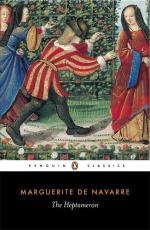Opinion as to these poems has varied somewhat, but their merit has never been put very high, nor, to tell the truth, could it be put high by any one who speaks critically. In the first place, they are written for the most part on very bad models, both in general plan and in particular style and expression. The plan is, as has been said, taken from the long-winded allegorical erotic poetry of the very late thirteenth, the fourteenth, and the fifteenth centuries—poetry which is now among the most difficult to read in any literature. The groundwork or canvas being transferred from love to religion, it gains a little in freshness and directness of purpose, but hardly in general readableness. Thus, for instance, two whole pages of the Miroir, or some forty or fifty lines, are taken up with endless playings on the words mort and vie and their derivatives, such as mortifiez, and mort fiez, mort vivifiee and vie mourante. The sacred comedies or mysteries have the tediousness and lack of action of the older pieces of the same kind without their naivete; and pretty much the same may be said of the profane comedy (which is a kind of morality), and of the farce. Of La Coche, what has been said of the long sacred poems may be said, except that here we go back to the actual subject of the models, not on the whole with advantage: while in the minor pieces the same word plays and frigid conceits are observable.
But if this somewhat severe judgment must be passed on the poems as wholes, and from a certain point of view, it may be considerably softened when they are considered more in detail. In not a few passages of the religious poems Margaret has reached (and as she had no examples before her except Marot’s psalms, which were themselves later than at least some of her work, may be said to have anticipated) that grave and solemn harmony of the French Huguenots of the sixteenth century, which in Du Bartas, in Agrippa d’Aubigne, and in passages of the tragedian Montchrestien, strikes notes hardly touched elsewhere




